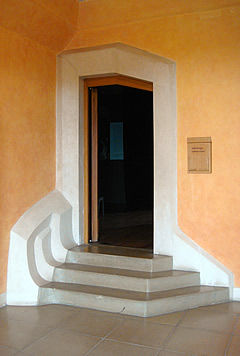

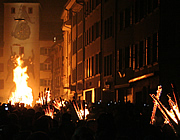
The canton of Basel-Land (and a bit of the neighbouring cantons), mostly peacefully rural, with towns settled in Roman times, and still thriving today and a fantastic Fire Festival.
Basel the nicest city in Switzerland
Basel Fasnacht - a terrific carnival


Baselbiet is the local name for the canton of Basel-Landschaft in the north west of Switzerland. It shares borders with France and Germany, the latter being defined by the River Rhine which turns north at the city to form the border between France and Germany.


Traditionally this is an agricultural region which, until the eighteenth century, was dependant on the city. It was only in 1832, after decades of unrest, that the half-canton of Basel-Landschaft was created, separate from the half canton of the city.1 The canton took the bishop's black crosier flag of the city, reversed it and coloured it red as their own.
It seems even the smallest of villages had their castles, and their ruins are dotted all over the landscape, usually, of course, on a height commanding a view of a valley.




Today it is still very much a rural location, with forested hills, the river Birs running through it and a good deal of agriculture, there are even grape vines and long-established cherry orchards. Nowadays the chemical and pharmaceutical industries are a major force in the region.
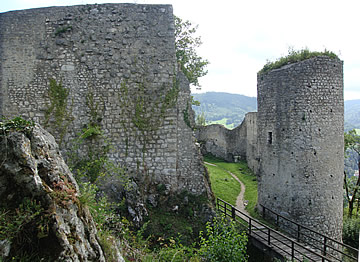



Having lived in both Muttenz and Münchenstein we have been quite close to the countryside.
Muttenz is interesting. It is a village based on agricultural activity with an unusual battlemented walled church precinct.


The Romanesque buildings were rebuilt after the earthquake of 1356.2 Today's church dates from the early fifteenth century. We were living here in 1991 when Switzerland celebrated the 700 year anniversary of the formation of the Swiss Confederation on August 1st; there was a huge outdoor communal feast with food, beer and wine and entertainment in the form of Alphorns, yodellers, school gymnastics and fireworks - all satisfyingly Swiss.
In Münchenstein we live on a hillside above the old part of town and its ruined castle, with forests behind us and a beautiful farm within walking distance. The farmer used to bring half a dozen of his honey-coloured cows to graze the parcels of land which weren't built on - they could make very short work of waist-high grass. But in recent years there has been much building on these meadows and I'm not sure it's worth his while any more to do it.
It was lovely to hear the cow bells so close.
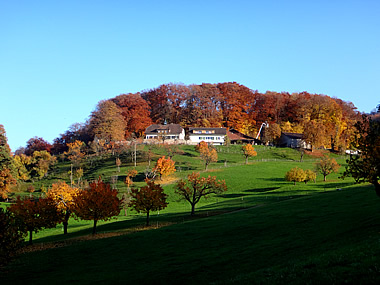
 Trotting races at Schänzli, 1991.
Trotting races at Schänzli, 1991.





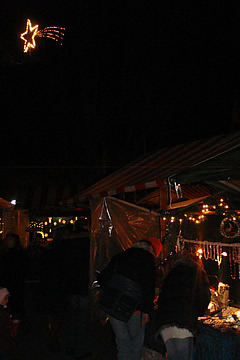








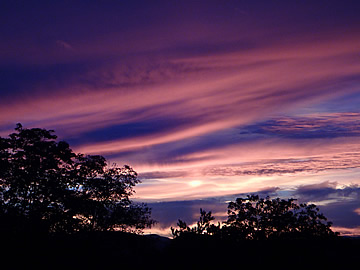



The region has a long history2,3,4 with a Celtic tribe, the Raurici, widely settled here, including Raurici on a hill in what was to become Basel city.5 The Romans favoured the site for its location at the crossroads of major trade routes with a colony established in 44BC, and substantial remains of the Roman capital of the region, Augusta Raurica, dating from 15BC, are located about 20km east of the city on the Rhine.




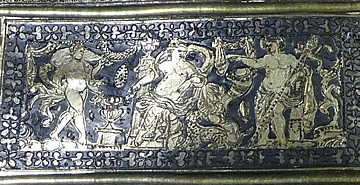

The theatre at the main site is the best preserved Roman theatre north of the Alps and could hold 8,000 spectators. There is also a very interesting museum and nearby the remains of a two storey building built around 50 AD which burnt down around 260/270. Luckily for the archaeologists, much was preserved, including a baking oven and fireplace on the lower floor, used for cooking and baking. People may also have purchased food here. The lower floor also served as a workshop and living space with a household shrine holding protective deities: two Mercuries, a Minerva and a dwarf. Substantial quantities of crockery were found on the upper floor, along with weapon parts and tools. It is thought that this was an artesan's storeroom and workshop.
The museum is the proud holder of a Roman silver treasure, comprising 270 objects, the most important collection of late antique silver in the world.

Not far away on the Rhine are the remains of thermal baths, though these are not very extensive.

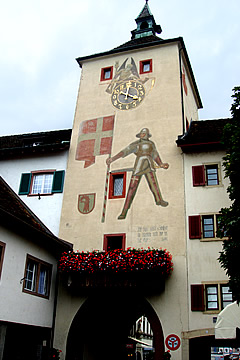
Liestal is the capital of Basel-Land and itself has a long history. It was officially founded in the 13th century but had been important since Roman times.3
Liestal has a terrific Fire Festival early in the year, just before Basel's Fasnacht. We first went in 2008. Crowds line the streets and when it is dark the fire carriers walk or trot through Obertor into the town, carrying flaming baskets and torches and dragging flaming carts. It is really quite impressive and very hot, if it's windy sparks are flying everywhere. We went again in 2010 but the crowds were so huge that it was difficult to get a good view.


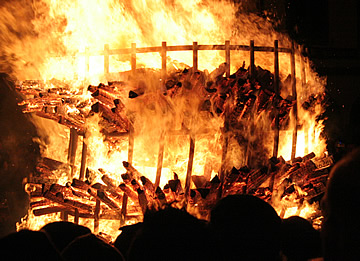

Hardy souls go straight from Liestal to Basel for the 4 am Morgenstreich - the opening of Fasnacht.


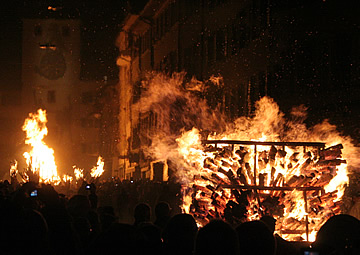

Basel-land is famous for its cherries and the beauty of its cherry orchards. In mid-April 2015 we decided it was about time we saw the orchards in full bloom so set out from our house to walk 3-4 km through the forest to the border with Canton Solothurn where there are orchards.

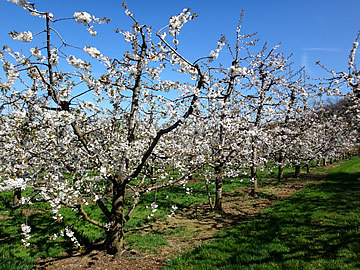



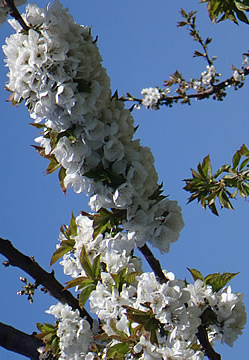

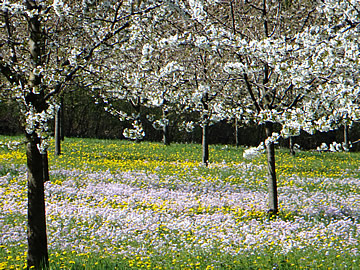
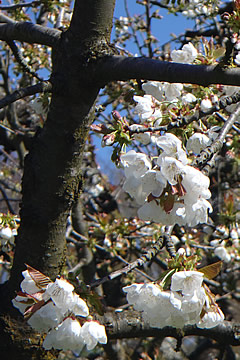


On the Rhine, just over the border in Aargau, is a pretty town, where there has been a settlement long before its formal foundation in 1130.3

Johanniter-Kappelle is a 15th century chapel of the Knights Hospitaller. Inside are a wonderful series of frescoes from the same era, depicting the Day of Judgement, with people emerging from the graves to be dragged away by devils to hell, or to enter heaven.

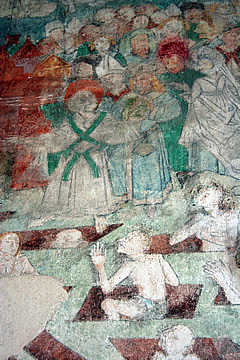

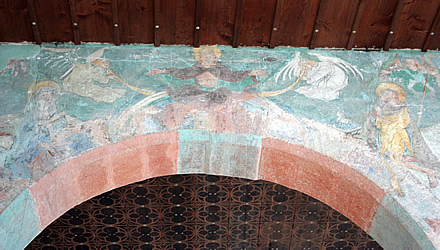






There are lots of remnants of the old town including gates and towers, and plenty of places to get a bite to eat, especially nice if you can get a table at one overlooking the river.

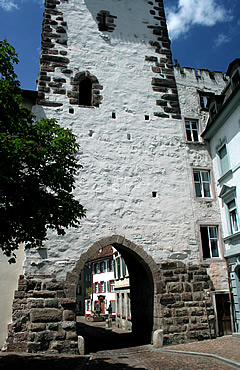



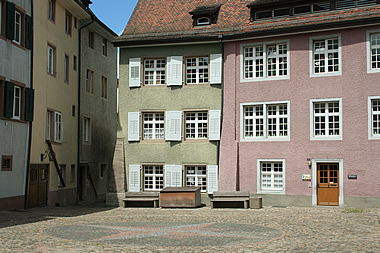
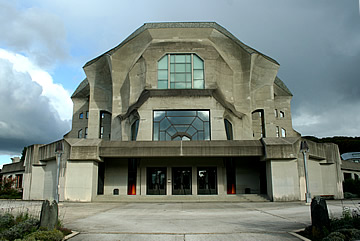
So close, again just over the cantonal border, the Goetheanum is a highly acclaimed example of architectural expressionism. It, and several smaller buildings around it, were designed by Rudolf Steiner, founder of the Anthroposophical Society.6 The society advocates spiritual development through self knowledge.
The current cast concrete building, finished in 1928, replaced an earlier wooden building which burned down. It's certainly very striking and the use of colour inside is lovely.






